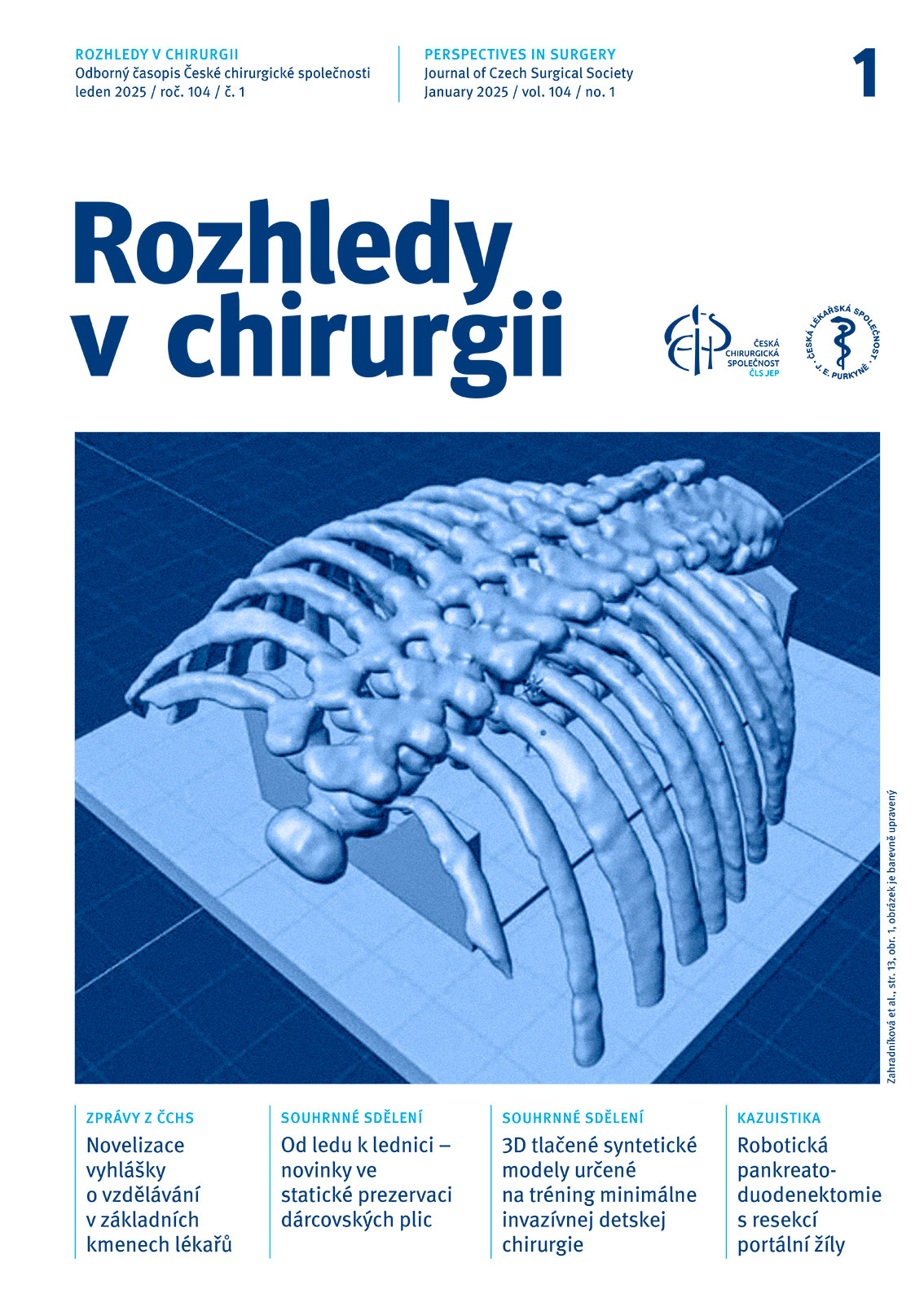Abstract
Introduction: Lumbar hernia in the pediatric population is an extremely rare diagnosis and therefore requires specific diagnostic and therapeutic approaches. This case report describes the first published case of a pediatric lumbar hernia in the Czech Republic.
Case description: A 22-month-old boy was examined at a pediatric surgical clinic due to a soft reducible mass in the right lumbar region, which, according to his mother, has been present from birth. An ultrasound scan confirmed a defect in the anatomical localization of the superior lumbar triangle (the triangle of Grynfeltt-Lesshaft) measuring 17 × 11 mm with a bowel loop herniation. The patient underwent a skeletal X-ray and an abdominal ultrasound in order to rule out associated malformations, following which he was scheduled for an open hernioplasty. Given the small size of the defect, a primary closure without mesh hernioplasty was performed. The postoperative course was uneventful and at clinical follow-ups the patient showed no signs of hernia recurrence or growth asymmetry.
Conclusion: Lumbar hernia in children is congenital and frequently occurs with other associated malformations, which must be ruled out. The type of operation depends on the size of the defect and its purpose is to provide a tension-free closure.
doi: 10.48095/ccrvch202520


